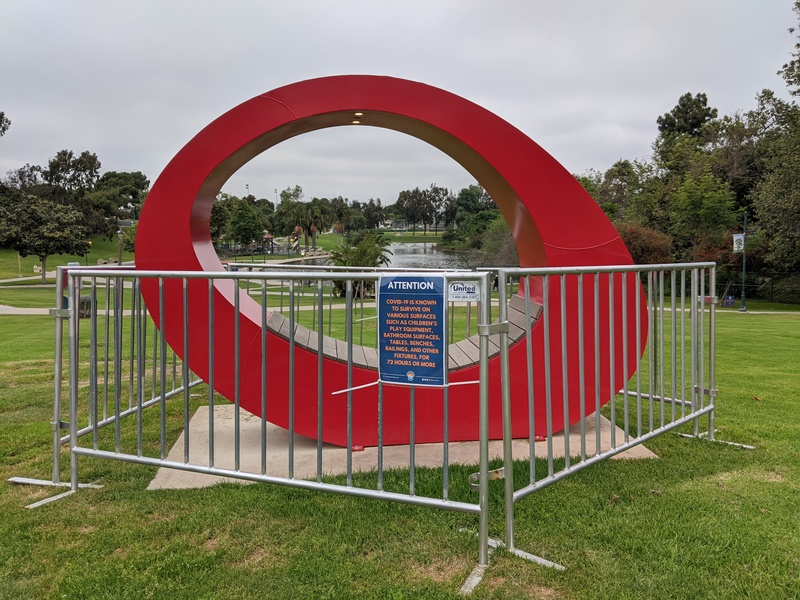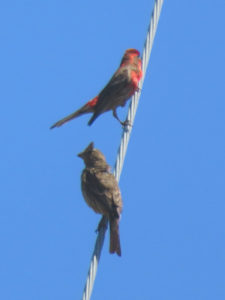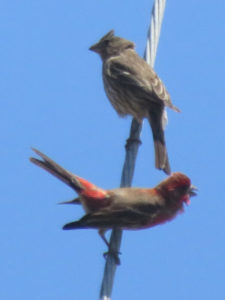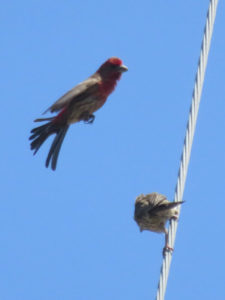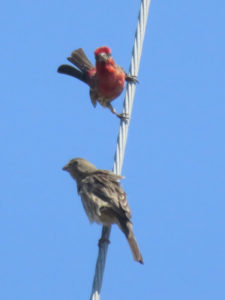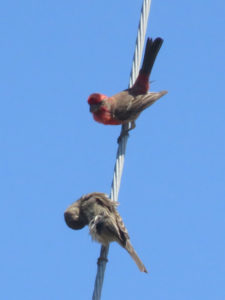Author Archives: Kelson
Bright the hawk’s flight on the empty sky.
I find myself thinking of “The Creation of Éa” every time I see a hawk in the distance.
Pillage Safely!
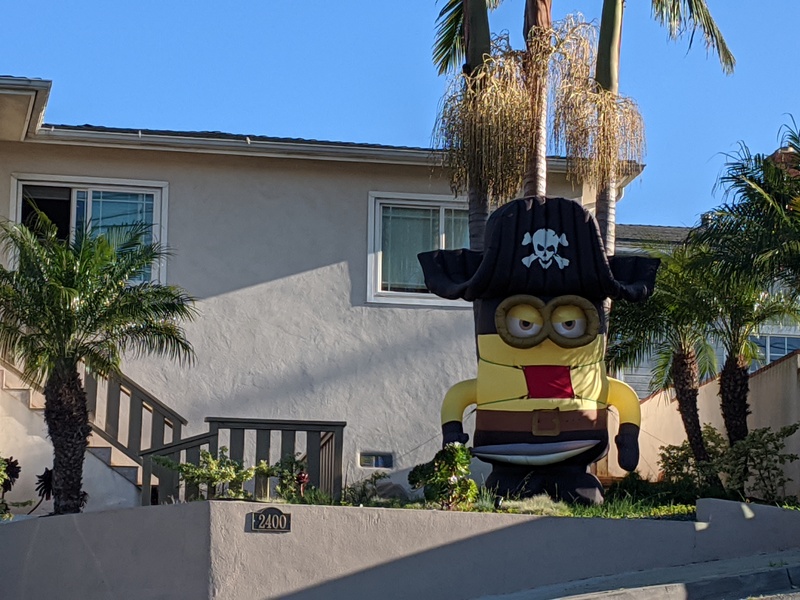
Even Minions are wearing face masks when they’re out pillaging.
Murder Hornets? Really?
Remember the opening from the 1980s Flash Gordon, where the villain has a dashboard with buttons labeled with various disasters? He used it like a sound effects board: Press the Earthquake button and it would trigger an earthquake. Press the Hurricane button and trigger a hurricane. Press the freaking Hot Hail button and it would trigger a fiery hailstorm. (seriously).
I kinda feel like “Murder Hornets” is another button on that patch board.
For what it’s worth, the Smithsonian has a more…measured take on them: No, Americans Do Not Need to Panic About ‘Murder Hornets’
The Asian giant hornet, seen for the first time in North America in 2019, is unlikely to murder you or U.S. bees, according to Smithsonian entomologist
Flappy Bird (No, Not That One!)

A hummingbird spotted a couple of days ago. I don’t often get good photos of hummingbirds, since they tend to move so quickly (and sometimes when they do pause, it’s somewhere I don’t feel like I should be aiming a camera, like a neighbor’s yard.)
I still wouldn’t call this one a good shot, but it’s at least an interesting one!
Almost Got It
The kid has been watching a zillion teardown/repair/dismantling videos of various devices on YouTube, and wants to learn to repair phones.
So I took the old phones and tablet that I’d set aside for e-waste collection, and the tools I used to do battery replacements on a couple of devices a while back, and let him at them.
He disassembled and reassembled the dead Nexus 5x that got stuck bootlooping two years ago. Plugged it in. Waited.
It actually powered on enough for us to get it into recovery mode!
Unfortunately I should have left it in fastboot mode, because now that I’ve downloaded an image to install, I can’t get it to power up again at all.
Sorta Open. Maaaybe. If You’re Careful.
I mentioned last week that Manhattan Beach had closed all their parks outright, rather than just closing equipment and facilities. Over the weekend heat wave, they reopened at least Polliwog Park, taking down the caution tape from the perimeter and instead wrapping individual playgrounds, gazebos, sculptures and even picnic tables with metal fencing.
And signs. Signs and fences everywhere.
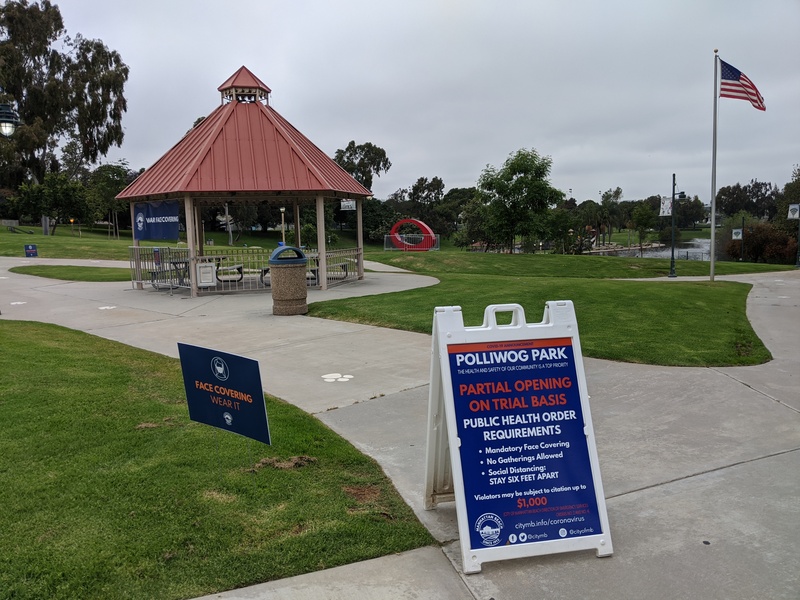
I’d been able to see at least some of the signs from the side of the road last week, reminding you of the Covid-19 mantras: Cover your face. Keep six feet apart. Stay home if you’re sick.
And then there were signs like the one above explaining that yes, the park open again — but only on a trial basis, and you have to follow the rules! There was even a police car parked on the lawn to show they meant business, though I’m not sure where the officer was. It’s a big park.
And then there were these, posted on all those portable fences.
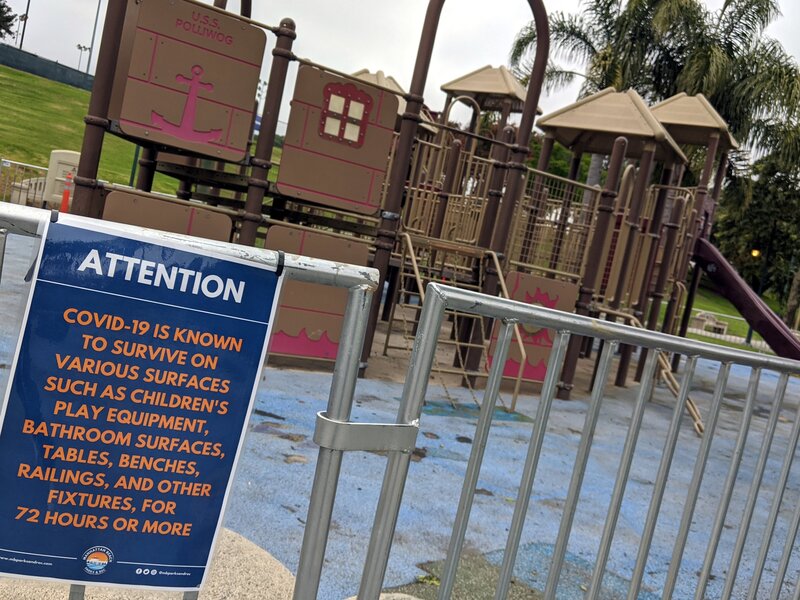
Some cities around here have just wrapped their playgrounds in caution tape. Manhattan Beach wants to make sure you know why it’s closed.
Even the interactive art installations.
